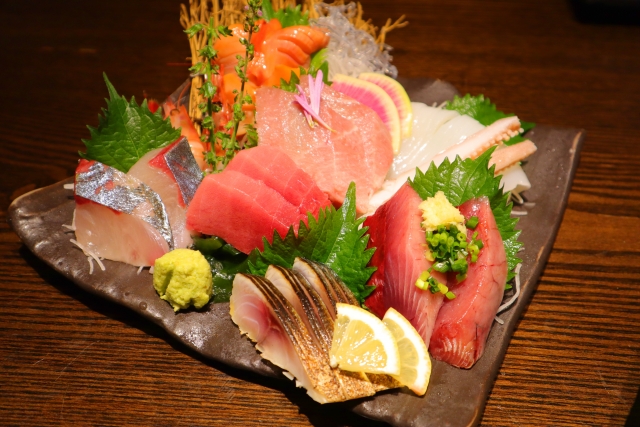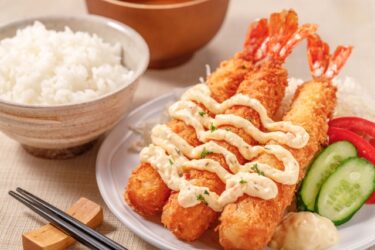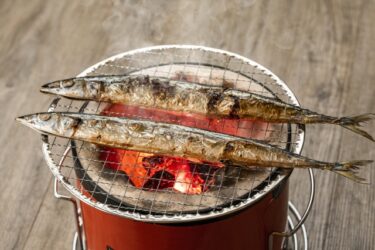Sashimi is a dish in which the bones, internal organs, and skin of seafood are carefully removed, cut into bite-sized pieces, and ready to eat as they are, and then served on a plate.
It is one of the Japanese dishes that makes the best use of the taste of the ingredients. Depending on the ingredients, the preparation method, cutting method and serving method are decided, and a special kitchen knife may be used.

In addition, great care is taken in hygiene, and food poisoning caused by sashimi rarely occurs in Japan. Sashimi is eaten with soy sauce and wasabi. Please enjoy the sashimi that can only be eaten in Japan.
What is Sashimi and can I eat it?
Materials of Sashimi
Seafoods
| Gluten-free | Low-gluten | Wheat-free | Low FODMAPs | |
| Restaurant | Food supermarket |
The variety of seafood used for Sashimi is endless
Since Japan is surrounded by the sea, we can get fresh seafood. In addition, because the storage and delivery technology by refrigeration and freezing is advanced, we can eat fresh sashimi anywhere in Japan.
It has been a custom to eat raw fish for a long time, but sashimi became popular about 300 years before the development of dark soy sauce. Dark soy sauce eliminates the fishy odor and enhances the taste of the ingredients.

Japanese sashimi is safe. Food poisoning is rarely caused by sashimi. In sashimi, not all seafood is eaten as they are. For seafood that may have parasites, they are killed by freezing once. Octopus etc. are served after boiling. Fish that take a long time to be served are frozen immediately after being caught and thawed just before they are cooked to keep them fresh. In this way, in Japan, where seafood is often eaten raw, various know-how is utilized. We are not just eating seafood raw.
I don’t even know how many kinds of seafood are used for sashimi. Since Japan is a long country from north to south, the types of fish caught differ depending on the location. Therefore, the types of seafood are different between sashimi served in Hokkaido and sashimi served in Kyushu. Also, the type of seafood changes depending on the season. Further to rural areas, there are restaurants that offer sashimi of fish that are not generally distributed due to low catch.

Here, we will introduce common seafood that can be eaten anywhere in Japan.
Tuna
The color is light red. It is a delicious fish and is always included in the sashimi platter. Normal tuna is low in fat, but the fat-rich parts called “Ohtoro” and “Chutoro” are popular and expensive.
Salmon
The color is orange. It is a fish with a rich taste and is often eaten overseas. It is also caught in Japan, but most of it is imported from farmed products.
Yellowtail
The color is white to light gray. It is a fatty fish and has a good taste. They are called by different names depending on the size of the fish, and “Inada”, “Hamachi”, “Tubasu”, “Mejiro” and “Buri” are the same fish.
Sea bream
The color is clear white. It is elastic and has a firm texture. Originally it was a high-class fish, but now it is cultivated and the price has dropped.
Squid
The color is white. Squids are marine mollusks, not fish. It has a smooth texture and the taste is refreshing.
Octopus
The color is white and the skin is lilac. Octopus is also a marine mollusk, not a fish. In most cases, the octopus is sliced from the boiled one. It has a chewy texture and a slight sweetness.
Sweet shrimp
It is pink in color and comes with a head and tail, but eat only the body part. The body is tender and sweet.
Scallop adductor muscle
The color is white. It is soft and delicious.
Try to eat Sashimi!
How much ?
$10~30
Where can I eat Sashimi ?
Japanese Food Restaurant
Japanese restaurants always have a menu called “sashimi set meal”. Sashimi with rice and miso soup costs $ 10~15.
Izakaya
Most Izakaya have a menu called “Sashimi Assortment”. This is only sashimi. It’s about $ 10~30, depending on the amount.
Fish restaurant near the sea
There are restaurants that serve fish dishes, such as near the fishing port, where you can eat fresh sashimi at a low price. Japanese restaurants and izakaya mainly sell farmed and imported fish, but here you can eat sashimi of fresh fish caught nearby.
Precautions when eating Sashimi
For gluten-free people with celiac disease
Soy sauce, which is a seasoning used when eating sashimi, may use wheat as a raw material. Since the protein contained in the raw material is decomposed during the manufacturing process of soy sauce, no protein remains in the soy sauce.
In Japan, it is said that people with wheat allergies can eat soy sauce. However, the soy sauce used in Japan does not meet the gluten-free requirements, so you should decide for yourself whether to use soy sauce.
For people who are gluten-free except for celiac disease
Soy sauce contains almost no gluten, so you can eat it.
For Jews
Some sashimi ingredients do not fall under Kosher. For example, squid, octopus, shrimp, shellfish. It is recommended to check before eating.
Japanese writer’s comment for Sashimi
Plants and seaweed are served with sashimi. Many Japanese people don’t even know if they can be eaten or if they can be eaten. In conclusion, you can eat everything.

Sashimi may be accompanied by colorful seaweed. This is all edible. Please try it with soy sauce.
- Red seaweed: Tosakanori, Mafunori
- Green seaweed: Wakame seaweed, Gracilaria
- Transparent seaweed: Artificially made from the components of seaweed



